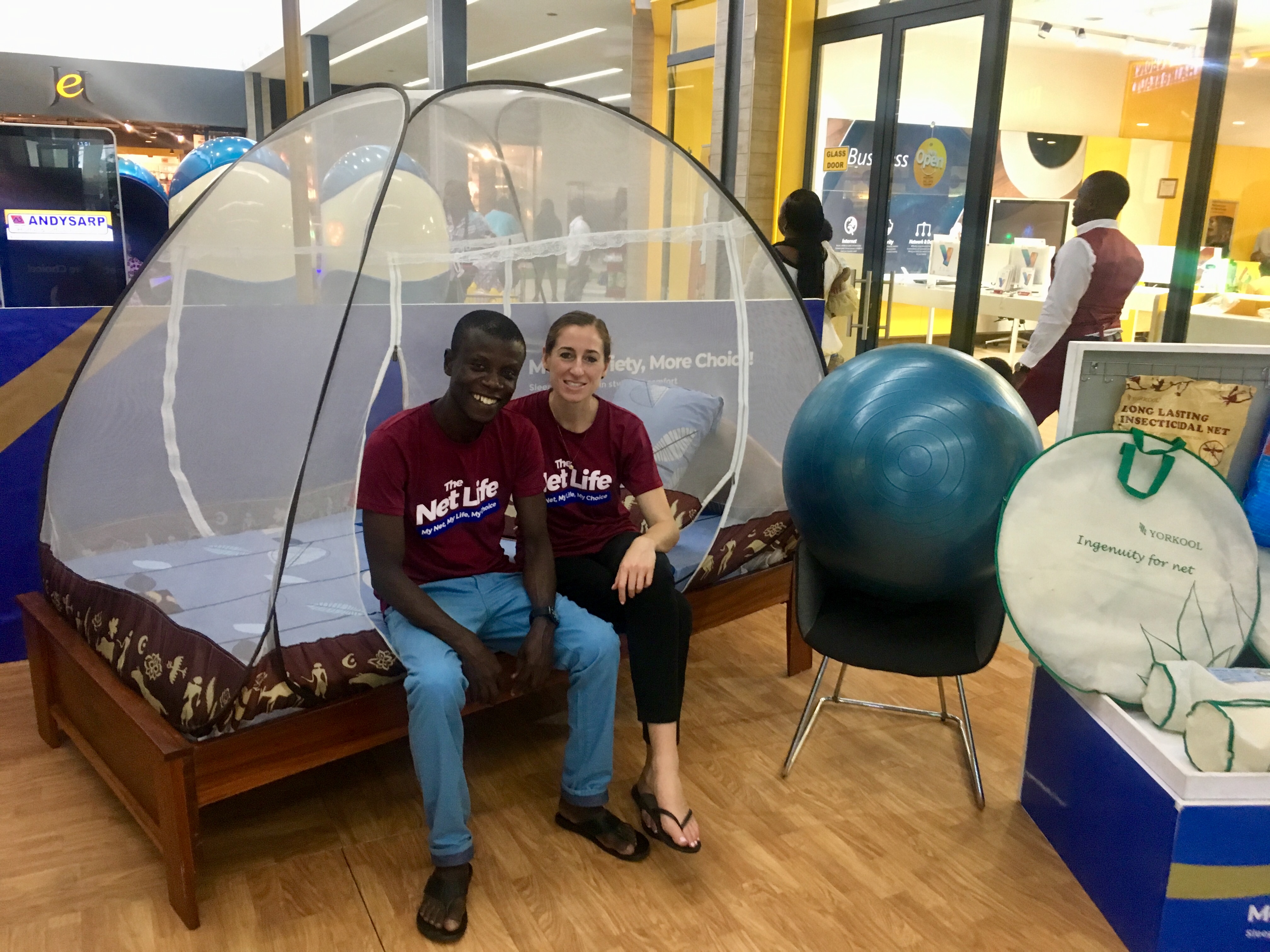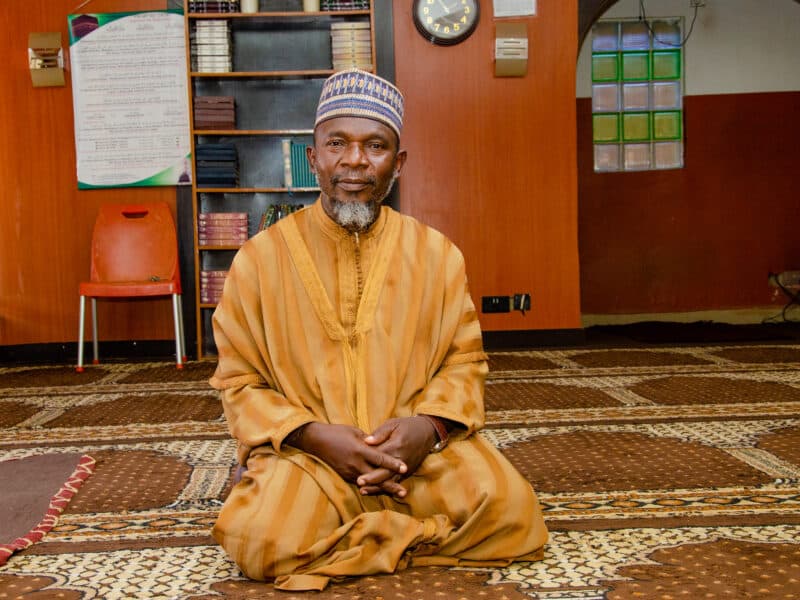To those in the malaria prevention field, it seems obvious that people who are at risk of malaria would use whatever tools available to them, including mosquito nets, to prevent it.
In practice, however, sleeping under a mosquito net is a choice like any other and many middle-class Ghanaians don’t use them because they consider them inconvenient, uncomfortable and unattractive – even though they know nets are the most effective way to prevent malaria. In 2017, malaria sickened 219 million people in 87 countries and killed 435,000.
So how did researchers from the Johns Hopkins Center for Communication Programs figure out what kinds of mosquito nets Ghanaians might want? They asked them.
In the June issue of Global Health: Science and Practice, CCP researchers outline the human-centered design process they used to explore consumer preferences for mosquito nets to be created for the private-sector retail market in Ghana – a key channel for providing consistent access to mosquito nets.
“Why don’t we ask people what they want? Why is this such a novel approach?” says CCP’s Danielle Piccinini, MPH, MBA, one of the study’s leaders. “For a health product like a bed net to be beneficial, it has to be used. Using a human-centered design approach is an important way to help us get input and buy-in from the people who will be the end users. We shouldn’t be designing products without it.”
Human-centered design is a creative problem-solving method done directly with key stakeholders to glean insights critical to designing products that are both novel and useful to a given market or audience. In the case of the CCP research, the work was done in conjunction with household surveys, focus group discussions and traditional market research as part of the Private Sector Malaria Prevention project, funded by the United Kingdom Department for International Development (DFID).
The widespread use of bed nets in many nations has been credited with playing a huge role in the reduction of the number of malaria cases in sub-Saharan Africa since 2001. Aid organizations have long distributed bed nets for free. The nets all basically look the same and people have no choice in what they get.

CCP’s Danielle Piccinini and Emmanuel Apronti sit on a bed outfitted with a newly designed mosquito net.
The problem is that in Ghana, for example, just 14 percent of middle-class households in the study claimed to sleep under mosquito nets – even though the CCP study found that most believe that nets offer the best protection from malaria-infected mosquitoes. To work, people have to use them.
So how do you get people to buy something that they are used to getting for free and that they find unattractive and unappealing? That’s where the human-centered design approach came in.
The researchers followed a series of steps as part of the process: Empathize (engage with stakeholders to understand their circumstances and thinking), Define (identify insights to refocus and redefine the challenge at hand), Ideate (generate ideas and solutions), Prototype (create low-fidelity prototypes of ideas for testing) and Test (test prototypes and use information to continue to refine ideas and solutions).
What they learned was that middle-class Ghanaians want nets that are easier to hang (such as from a single point as opposed to the usual several points), that are easier to get into and out of (such as zippered entrances that don’t involve retucking every time you leave the bed) and that are attractive and don’t detract from their room décor.
They’d even be willing, they said, to spend money to get something that met their preferences and better suited their lifestyle.
“The nets we get for free make your room look ugly,” said one woman involved in the design process. “We need fancy nets, with a variety of colors we can choose from, and ones that are nice to hang so we can do away with all the poles and nails in the walls.”
Said a female student: “In the middle of the night, when I have to [go to the bathroom], I have to think hard about it. Should I wait until morning or should I go through the stress of getting out of my net?”
Some participants spoke of how items they need to access – condoms, Bibles, eyeglasses, water, phones – are often outside of the net when they are inside. Others spoke of feelings of claustrophobia since most nets are a standard size and made for smaller beds.
All of this gave malaria-focused researchers a new way to think about nets.
“Bed nets should be thought of not just in terms of malaria prevention, but also as consumer products that people choose to use or not to use depending on how they feel about them,” Piccinini says.
The best thing Piccinini says she heard during the process was an excitement about the human-centered design approach itself.
“No one has ever taken the time to come ask us what we want in a bed net,” said a woman from the Ashanti region. “So thank you for asking us that today and taking our opinion into consideration.”
In an editorial accompanying the study, Michael Macdonald and Thomas Putzer praised the application of new approaches to creating new markets for bed nets that make them more attractive to the people who can benefit from their use.
“Human-centered design provides a method to adapt malaria control interventions to be more closely aligned with a family’s convenience, comfort, and personal lifestyle, enabling a broader and more sustained culture of access and use,” they write. “There is much to be learned from consumer product development and [human-centered design] to solve complex problems for which we thought, with our hubris, we already knew the simple solution.”
The human-centered design focus group discussions for the CCP project were conducted in March 2017. In May 2019, Piccinini visited Ghana to see the nets that were designed and manufactured as a result of the research being sold in pharmacies and supermarkets. Two of the new designs available for sale are a conical net with a zippered entry and a pop-up tent net.
People kept telling her how excited they were to buy one.
“Using a Human-Centered Design Approach to Determine Consumer Preferences for Long-Lasting Insecticidal Nets in Ghana” was written by Sharon Kim, Danielle Piccinini, Elorm Mensah and Matthew Lynch. Kim works for the Johns Hopkins Carey Business School and Mensah with URIKA Research in Accra, Ghana. Piccinini also teaches Human-Centered Design and Design Thinking at the Johns Hopkins Carey Business School.





